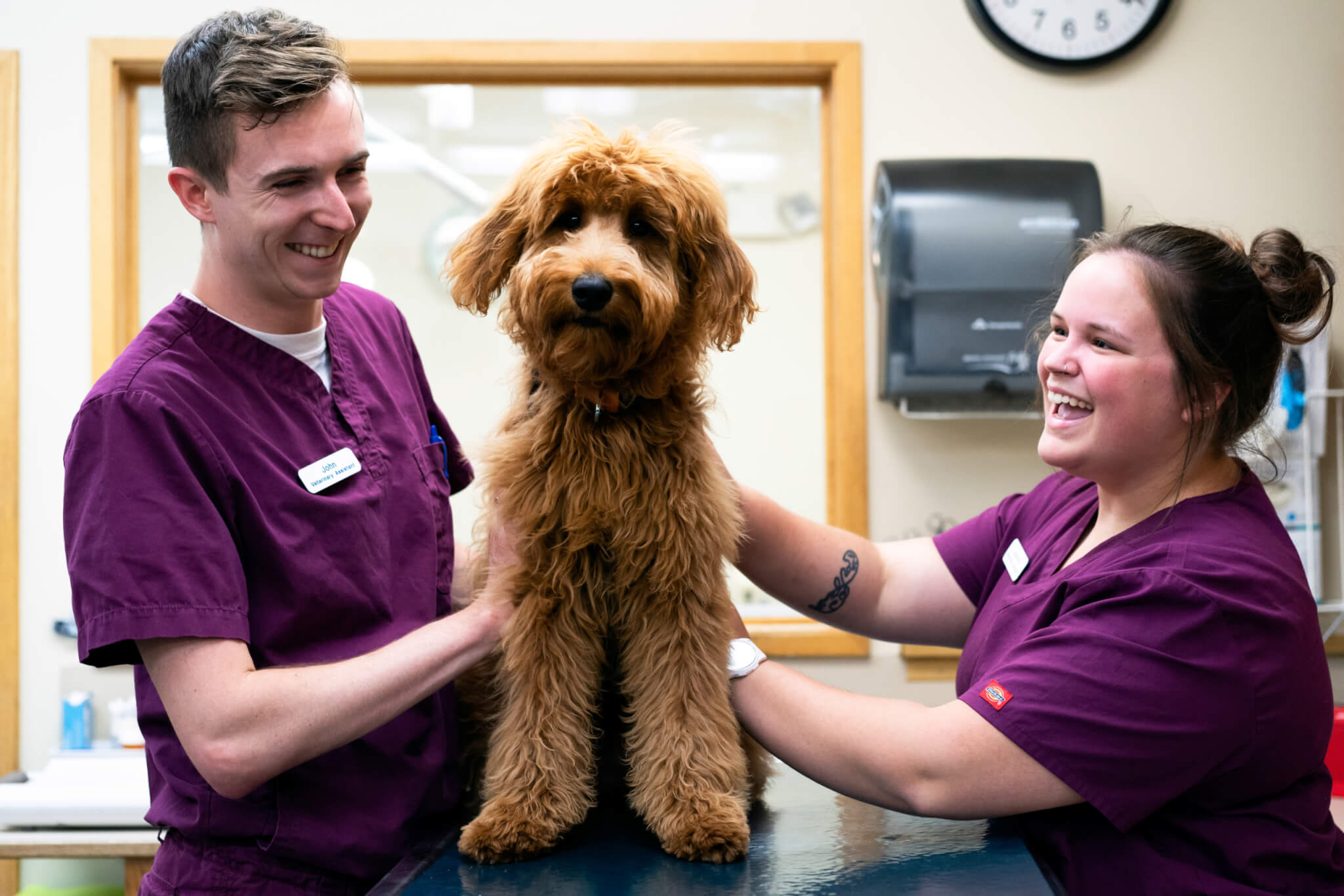Prevention is the cornerstone of good health. Prevention starts with education and examination.
We recommend yearly exams because:
- 93% of pets examined annually need some level of care or management to restore health.
- One year of our lives is equivalent to five to eight years of a dog or cat’s life.
- 60-80% of cats and dogs over three years of age have dental disease that needs care.
- Dental disease can decrease life expectancy by 20%
- Annual examinations play an important role in patient care management. Many diseases do not produce observable symptoms, making their clinical signs difficult to pick up. An excellent gauge of a patient’s health status is weight. Weight changes that are slow or mild are difficult to identify without using a scale. Early in many disease processes, the only indication that something is wrong is a weight fluctuation. Bringing your pet in for an annual exam is one way to detect weight fluctuation.
A thorough physical examination is necessary to identify hidden problems such as oral disease. Even if there are not overt problems with oral health, the exam allows us to teach pet owners about the importance of home dental care and to demonstrate effective care. Dental disease not only causes discomfort and inflammation in the mouth, it can also significantly impact the kidneys and liver or cause heart infections. Yearly examinations help determine when professional cleaning is necessary and also encourage and educate clients on how to care for their pets’ teeth.
All exams are a chance to check routine care practices and talk to owners about how to better train, groom, feed, and generally care for their pets.
Frequency of Routine Exams
In younger animals yearly exams are needed to check the above, but also to begin to talk with pet owners about ongoing care and early detection of possible breed or conformational problems.
In older animals (cats over 10 years) once a year may not be often enough to catch age related problems, such as kidney degeneration, liver disease, cancer and thyroid conditions. Exams every six months will more adequately serve an older pet. In addition to the exam, blood work and a urinalysis for older animals helps us find hidden problems that might be emerging.
Beyond the Physical
A thorough physical examination is an opportunity to obtain a detailed history and review the medical record. Medical issues and problems that have been identified in the past will often need follow-up and monitoring.
The annual visit is also an opportunity for client education, such as current nutritional information, vaccine developments, flea control discussion, and other topics. Client education is one of the most important services offered to pet owners. Because we don’t always have the time to do this when we are dealing with an overt medical problem, the well patient visit is an ideal time for education.
Prevention and early improvement in health are much less costly and ultimately more effective than waiting until an animal is obviously ill. Annual well pet examinations are one of the most important things owners can do for their pets.

